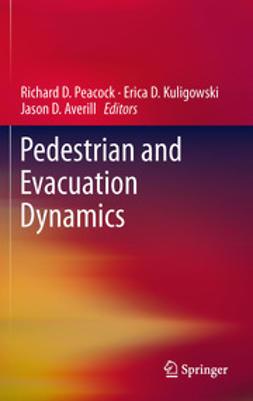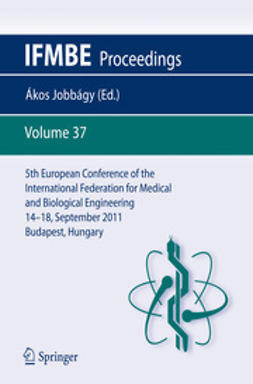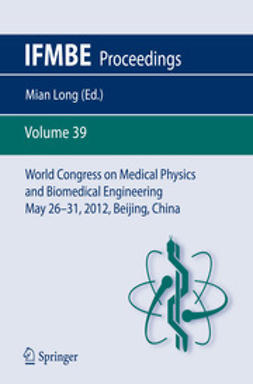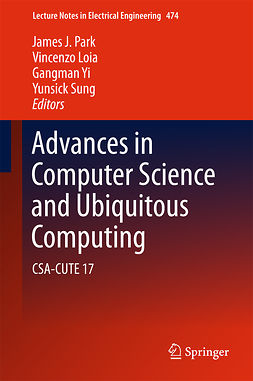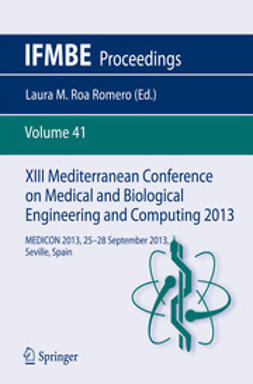Peacock, Richard D.
Pedestrian and Evacuation Dynamics
1. Five Grand Challenges in Pedestrian and Evacuation Dynamics
J. D. Averill
2. Emergency Door Capacity: Influence of Population Composition and Stress Level
W. Daamen, S.P. Hoogendoorn
3. Overall and Local Movement Speeds During Fire Drill Evacuations in Buildings up to 31 Stories
R. D. Peacock, B. L. Hoskins, E. D. Kuligowski
4. Predicting the Probability of Evacuation Congestion Occurrence Relating to Elapsed Time and Vertical Section in a High-rise Building
J. Choi, H. Hwang, W. Hong
5. Employing Human Egress Data
S.M.V. Gwynne
6. New Data for Human Performance in Planar Corridors
A. Winkens, W. Klingsch, A. Seyfried
7. Influence of Geometry Parameters on Pedestrian Flow through Bottleneck
T. Rupprecht, W. Klingsch, A. Seyfried
8. Real-Time Video Analysis of Pedestrians to Support Agent Simulation of People Behavior
O. Junker, V. Strauss, R. Majer, N. Link
9. Free Walking Speeds on Stairs: Effects of Stair Gradients and Obesity of Pedestrians
T. Fujiyama, N. Tyler
10. Travel Along Stairs by Individuals with Disabilities: A Summary of Devices Used During Routine Travel and Travel During Emergencies
G. E. Hedman
11. The Evacuation Training Problems of an Earthquake in China
C. Lu
12. An Experimental Evaluation of Movement Devices Used to Assist People with Reduced Mobility in High-Rise Building Evacuations
A.P.M. Adams, E.R. Galea
13. Evacuation Dynamics of Children – Walking Speeds, Flows Through Doors in Daycare Centers
A. R. Larusdottir, A. S. Dederichs
14. Evacuation Analysis of 1000+ Seat Blended Wing Body Aircraft Configurations: Computer Simulations and Full-scale Evacuation Experiment
E. R. Galea, L. Filippidis, Z. Wang, P. J. Lawrence, J. Ewer
15. Collection of Evacuation Data for Large Passenger Vessels at Sea
E.R. Galea, R.C. Brown, L. Filippidis, S. Deere
16. Experimental Research on Investigation of Metro Passenger Evacuation Behaviors in Case of Emergency
H. Li, Z. Maohua, S. Congling, S. Jiehong, C. Haicheng, X. Qiaoxiang
17. Modelling Random Taste Variations on Level Changes in Passenger Route Choice in a Public Transport Station
I. Zeiler, C. Rudloff, D. Bauer
18. Extended Range Telepresence for Evacuation Training in Pedestrian Simulations
A. Pérez Arias, U. D. Hanebeck, P. Ehrhardt, S. Hengst, T. Kretz, P. Vortisch
19. Proof of Concept: Use of Eye-Tracking to Record How People Use Exit Signage
R. C. Till, J. S. Babcock
20. Measurement Techniques for Unannounced Evacuation Experiments
D. Nilsson, H. Frantzich
21. Automation of Pedestrian Tracking in a Crowded Situation
S. Saadat, K. Teknomo
22. Pre-Warning Staff Delay: A Forgotten Component in ASET/RSET Calculations
S.M.V. Gwynne, D. Purser, D.L. Boswell
23. Fundamental Diagrams for Pedestrian Networks
S.P. Hoogendoorn, M.C. Campanella, W. Daamen
24. Modeling of Human Behavior in Crowds Using a Cognitive Feedback Approach
Y. E. Papelis, L. J. Bair, S. Manepalli, P. Madhavan, R. Kady, E. Weisel
25. How Do People with Disabilities Consider Fire Safety and Evacuation Possibilities in Historical Buildings?
S. Bengtson, L. Kecklund, E. Siré, K. Andrée, S. Willander
26. Risk Minimizing Evacuation Strategies under Uncertainty
G. Lämmel, H. Klüpfel, K. Nagel
27. Methods for Improving Efficiency of Queuing Systems
D. Yanagisawa, Y. Suma, Y. Tanaka, A. Tomoeda, K. Ohtsuka, K. Nishinari
28. A Stochastic Evacuation Model for Fire Life Safety Assessment in Transportation System
K. Kang
29. Cellular Automata Evacuation Model Considering Information Transfer in Building with Obstacles
L. Yang, K. Zhu, S. Liu
30. Quickest Cluster Flow Problems
H. W. Hamacher, K. Leiner, S. Ruzika
31. Virtual Reality Simulation of Architectural Clues’ Effects on Human Behavior and Decision Making in Fire Emergency Evacuation
Sh. F. Abu-Safieh
32. A Multi-Grid Model for Evacuation Coupling With the Effects of Fire Products
Z. Fang, W. Song, H. Wu
33. Runtime Optimization of Force Based Models within the Hermes Project
A. Seyfried, M. Chraibi, U. Kemloh, J. Mehlich, A. Schadschneider
34. A Dynamic Simulation on Crowd Congestion in Large-Scale Terminal Station Complex in an Official Announcement Advisory Information
Q. Cui, M. Ichikawa, T. Kaneda, H. Deguchi
35. Evacuation Assistance for a Sports Arena Using a Macroscopic Network Model
A. Schomborg, K. Nökel, A. Seyfried
36. Validation of a Potential-based Evacuation Model of City Residents in Post-earthquake Fire
T. Nishino, S. Tsuburaya, K. Himoto, T. Tanaka
37. Assistance of Evacuation Planning with High-Speed Network Model-based Pedestrian Simulator
T. Yamashita, S. Soeda, I. Noda
38. An Evacuation Model for High Speed Trains
J.A. Capote, D. Alvear, O. Abreu, M. Lázaro, A. Cuesta
39. A Comparison of Grid-based and Continuous Space Pedestrian Modelling Software: Analysis of Two UK Train Stations
C. J. E. Castle, N. P. Waterson, E. Pellissier, S. Bail
40. Implementing a Hybrid Space Discretisation within an Agent Based Evacuation Model
N. Chooramun, P.J. Lawrence, E.R. Galea
41. Bidirectional Coupling of Macroscopic and Microscopic Approaches for Pedestrian Behavior Prediction
A. Kneidl, M. Thiemann, A. Borrmann, S. Ruzika, H.W. Hamacher, G. Köster, E. Rank
42. Emergency Evacuation Modeling: A Novel Approach to Layout Designs and Evacuation Procedures
R. A. Kady, A. Tolk
43. The Use of Fine – Coarse Network Model for Simulating Building Evacuation with Information System
M. Cisek, M. Kapalka
44. Simulation of Pedestrian Flow outside a Singleexit Room in Mean-field Approximation Model
J. Zhang, W. Song
45. A Sandwich Approach for Evacuation Time Bounds
H.W. Hamacher, S. Heller, W. Klein, G. Köster, S. Ruzika
46. A Knowledge-based Approach to Crowd Classification
S. Bandini, L. Manenti, S. Manzoni, F. Sartori
47. Towards Realistic Modeling of Crowd Compressibility
J. Wąs, W. Myśliwiec, R. Lubaś
48. Towards Automatic and Robust Adjustment of Human Behavioral Parameters in a Pedestrian Stream Model to Measured Data
M. Davidich, G. Koester
49. Comparing Pedestrian Movement Simulation Models for a Crossing Area Based on Real World Data
D. Bauer
50. Towards a Calibration of the Floor Field Cellular Automaton
A. Schadschneider, C. Eilhardt, S. Nowak, R. Will
51. To See Behind the Curtain – A Methodical Approach to Identify Calculation Methods of Closed-Source Evacuation Software Tools
C. Rogsch, W. Klingsch
52. Analyzing Stop-and-Go Waves by Experiment and Modeling
A. Portz, A. Seyfried
53. Experimental Study of Crowd Flow Passing through Simple-shaped Room and Validation for an Evacuation Simulator
T. Sano, Y. Yoshida, N. Takeichi, T. Kimura, Y. Minegishi
54. Calculating and Verifying the Staircase-length for Evacuation Analysis
Hwang Hyun-seung, Choi Jun-ho, Hong Won-hwa
55. Addressing the Needs of People using Elevators for Emergency Evacuation
R. W. Bukowski
56. Stairs or Lifts? - A Study of Human Factors Associated With Lift/Elevator Usage during Evacuations Using an Online Survey
M.J Kinsey, E.R Galea, P.J Lawrence
57. Elevator Evacuation Algorithms
M-L. Siikonen, J. S. Sorsa
58. Experiments for the Feasibility Study of the Evacuation by Moving Escalator in Public Space
E. Okamoto, Y. Hasemi, S. Moriyama, N. Okada
59. Assessing Crowd Dynamics and Spectator Safety in Seated Area at a Football Stadium
S.Y.Z. Au, J. Gilroy, R.A. Haslam
60. Stay or Go? Human Behavior in Major Evacuations
P. F. Johnson, C. E. Johnson, C. Sutherland
61. Analysis of Occupant Behavior During a Highrise Office Building Fire
E. D. Kuligowski, B. L. Hoskins
62. Accessibility and Evacuation Planning – Similarities and Differences
J. Bendel, H. Klüpfel
63. Micro-Simulation Modeling of Persons with Reduced Mobility: Is the London Framework Applicable in North America and Does it Affect Modeling Output
D. A. Fisher, A. Jenkins
64. Prospects for the Design of Cognitive Systems that Manage the Movement of Large Crowds
N. E. Groner, E. Miller-Hooks, L. Feng
65. Risk Management at Major Events - Study of Behavioral Aspects and Implementation into the ASERI Microscopic Evacuation Mode
R. Könnecke, V. Schneider
66. Crowd Management Based on Scientific Research to Prevent Crowd Panic and Disasters
S. Al Bosta
67. The Effect of Stair Width on Occupant Speed and Flow Rate for Egress of High Rise Buildings
A. J. Blair, J. A. Milke
68. Using Stereo Recordings to Extract Pedestrian Trajectories Automatically in Space
M. Boltes, A. Seyfried, B. Steffen, A. Schadschneider
69. A Methodology to Calibrate Pedestrian Walker Models Using Multiple-Objectives
M. C. Campanella, S. P.Hoogendoorn, W. Daamen
70. Influence of Doorway Width on Emergency Door Capacity
W. Daamen, S. P. Hoogendoorn
71. An Example of Complex Pedestrian Route Choice
F. Gräßle, T. Kretz
72. Sensor-Assisted Support Tools for Live Evacuation
S. Grindrod, S. Welch, J. Fraser-Mitchell
73. Mutual Information for the Detection of Crush
P. J. Harding, M. Amos, S.M.V. Gwynne
74. Evacuation Planning Tool (EPT) for Emergency, Event and Space Planning
M. Harmon, J. Joseph
75. Counterflow Model for FDS+Evac Simulations
S. Heliövaara, T. Korhonen
76. A Study on Evacuation Simulation after Earthquake in Consumer Facilities
A. Hokugo, T. Kaneko, A. Sekizawa, S. Kakegawa, H. Notake
77. Introducing Emotion Modelling to Agent-Based Pedestrian Circulation Simulation
C. Hollmann, P. J. Lawrence, E. R. Galea
78. A Study of Density of the Person in a Classroom for Building Evacuation Safety Regulations in Korea
H. Youn, Y. Hwang, Y. Kwon
79. Experiments on Egress of Persons with Mobile Disability in Train Car
K. Jong-Hoon, K. Woon-Hyung, R. Sam-Kew, L. Duck-Hee, J. Woo-Sung, H. Kyung
80. On Time Scaling and Validation of a Stochastic CA Pedestrian Dynamics Model
E. Kirik, T. Yurgel’yan, D. Krouglov
81. FDS+Evac: Modelling Pedestrian Movement in Crowds
T. Korhonen, S. Heliövaara
82. Behaviour and Perception-based Pedestrian Evacuation Simulation
T. Kretz, G. Mayer, A. Mühlberger
83. Analysis of Bottleneck Motion Using Voronoi Diagrams
J. Liddle, A. Seyfried, B. Steffen
84. Human Guiding, Turning Theory into Practice
J. Lindström, L. Barna, P. Stevn, R. Eggleton
85. Modeling Evacuation in Selected Types of Buildings and an Analysis of the Achieved Results
M. Lopušniak
86. Experimental Investigation on the Pair Interaction Between Pedestrians
J. Ma, W. G. Song, S. M. Lo, G. X. Liao, K. K. Yuen
87. Emergency Situations in Nightclubs: A Discussion on How to Improve the Fire Safety Strategies Through The Use of Evacuation Modeling Analysis
R. Machado, M. Anderson
88. Efficiently Using Micro-Simulation to Inform Facility Design – A Case Study in Managing Complexity
E. Morrow
89. Next Generation Paradigms in Pedestrian Modeling
D.W. Peterson
90. Next Steps for Agent-Based Simulations of Mass Egress
D. A. Samuelson
91. Experimental Study of Pedestrian Flow in the Channel through Bottleneck
W. Song, J. Zhang, A. Seyfried
92. Occupant Wayfinding in Multi-storey Buildings
J. S. Sorsa, M-L. Siikonen
93. Improved Methods for Checking Forces Based Models of Pedestrian Dynamics
B. Steffen, M. Boltes, A. Seyfried
94. Pathfinder: An Agent-Based Egress Simulator
C. Thornton, R. O’Konski, B. Hardeman, D. Swenson
95. Sonic Speed on Pedestrian Dynamics: Relation between Sonic Speed and Density
A. Tomoeda, D. Yanagisawa, K. Nishinari
96. Sensitivity Visualization of Circulation under Congestion and Blockage
G. Wurzer, M. Ausserer, H. Hinneberg, C. Illera, A. Rosic
97. Integration of Human Evacuation Route Optimization Model and Fire Prevention and Control System
P. Zhang, P. Gang, G. Li, B. Chen
Nyckelord: Engineering, Electrical Engineering, Behavioural Sciences, Civil Engineering, Automotive Engineering
- Författare
- Peacock, Richard D.
- Kuligowski, Erica D.
- Averill, Jason D.
- Utgivare
- Springer
- Utgivningsår
- 2011
- Språk
- en
- Utgåva
- 1
- Sidantal
- 17 sidor
- Kategori
- Teknologi, energi, trafik
- Format
- E-bok
- eISBN (PDF)
- 9781441997258

